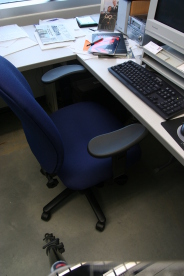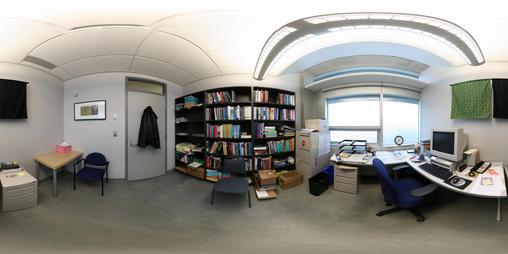As many of you know, most of my pictures come from a Canon Digital Rebel XT. I’m very happy with the 18–50mm f2.8 lens from Sigma that I’m using with it.
As someone who (1) likes taking pictures and (2) is a geek, I’m always on the lookout for novel things to do with my camera. Over the last few days, I have been collecting links. I thought I should share them.
Pinhole cameras
Pinhole cameras are about as simple as you can get: film with a small hole allowing light in. But why limit yourself to little boxes and film when you have a perfectly good instant-gratification digital sensor lying around?
As it turns out, you can make a quite nice pinhole camera with a camera’s body cap. Throw in a toilet paper tube or two, and you can have a zoom pinhole as well.
Bellows
I’m sure most of you can picture olde-timey cameras with the lens on a set of bellows. Well, they make new ones too: they are view cameras and are just the thing if you want full-control over the image you’re taking, and want to record on a large chunk of film for high detail. This may be a good time to note that a set of bellows will do at least as much as tilt-shift lenses, including the fake miniatures fetured on Boing Boing.
Once again, why piss around with film if you don’t have to? I’m pretty sure my local London Drugs won’t process a 4×5″ negative anyway. You can buy a set of bellows for a regular SLR that does the same job. For US$2500. Then buy an expensive medium-format lens.
In the lower end of the scale, one can buy a Lensbaby for US$150 or $270 (depending on the model). Or, the right kind of person can make a set of bellows out of a toilet plunger.
Panoramas
I have experimented with making panoramic images before. The idea is to take a series of pictures from one location and stitch them together with software like Hugin to stitch them together. The results can be quite impressive.
Shooting panoramas of landscapes is easy, but when you get up-close, parallax becomes an issue: you have to hold the camera still (over just the right point) while you turn it. A special tripod head is required to do this right. Panoramic heads typically run US$400 and up and are probably worth it if you need to do that kind of thing professionally. A KingPANO can be had for US$150 and looks like it might be fun to play with.
Others
I have also run across AquaPacs for underwater photography. On the other side of panoramas are object panoramas. You can buy an object turntable or make one with Legos to assist with this.
I also ran across a couple of general camera-hack sites: DigiHack and DIYPhotography.
So…
I don’t own any of these things (nor have I made any). I have been thinking about getting a KingPANO for a while, so I might order one of those some time.
Another trend here is using the camera’s body cap to attach crazy stuff as a “lens”. I might stop by a camera shop and see if they have spare caps (from dead cameras or something).
Anybody else got cool stuff to add?






